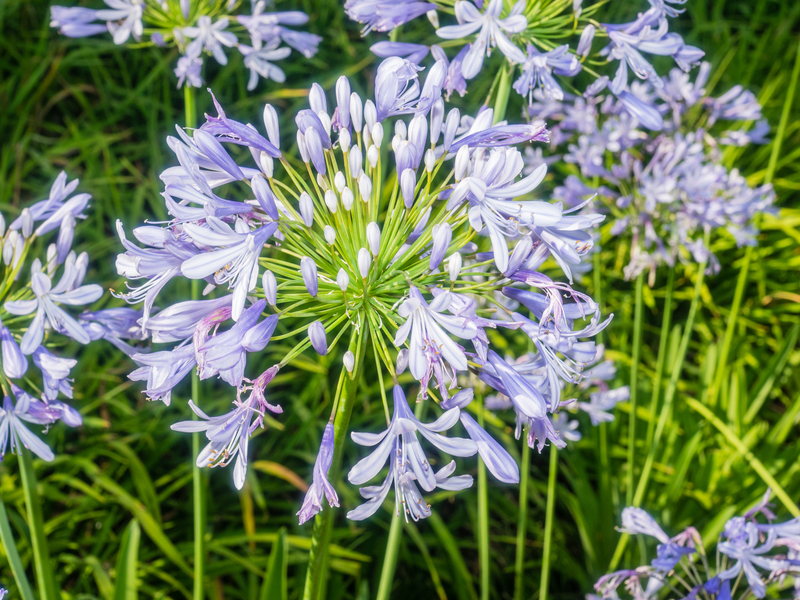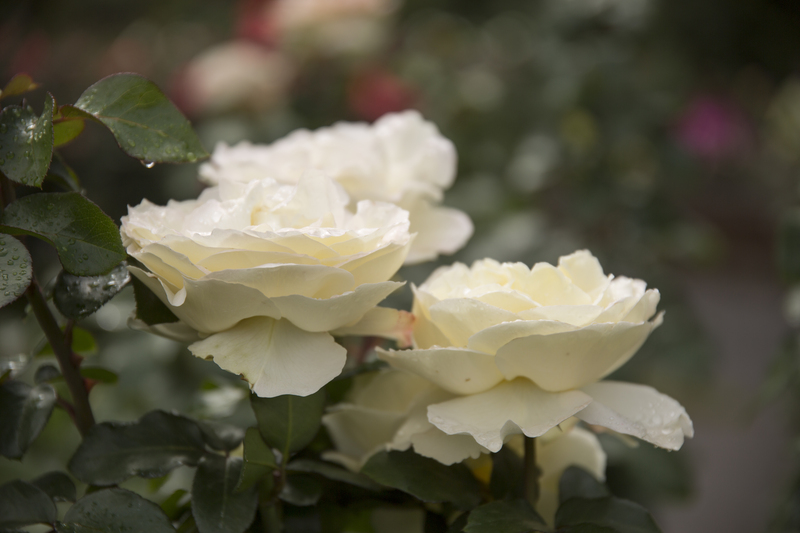Elegant Hedge Shapes for a Stunning Garden
Posted on 15/09/2025
Elegant Hedge Shapes for a Stunning Garden: Transform Your Outdoor Oasis
Creating a captivating landscape requires vision, creativity, and an understanding of how structured plantings can elevate the overall aesthetic. Elegant hedge shapes are the hallmark of refined gardens, offering privacy, structure, and year-round visual interest. In this comprehensive guide, we'll explore how you can use beautifully sculpted hedges to transform your garden into a stunning haven. Whether you're looking for classic formal lines, playful topiaries, or modern geometric statements, this article reveals ideas and techniques for achieving sophisticated hedging effects.

Why Choose Elegant Hedge Shapes?
Hedges do more than simply mark boundaries or provide privacy; they set the tone for your entire garden design. Impeccably trimmed hedge shapes add:
- Structure in all seasons
- Texture and contrast
- Architectural visual interest
- Opportunities to showcase creative flair
- Backdrop for vibrant perennials and annuals
An elegant hedge can frame views, accentuate focal points, or guide visitors along meandering garden paths. By choosing striking yet well-maintained shapes, you can lend your garden a sense of order and timeless style.
Popular Elegant Hedge Shapes and Their Impact
Let's dive into several classic and contemporary hedge styles you can employ for a truly stunning garden.
1. The Classic Straight-Edged Hedge
The most iconic form, a straight-edged hedge is synonymous with European formal gardens. This neatly clipped hedge creates a strong linear statement, ideal for:
- Defining walkways and borders
- Dividing garden rooms
- Providing privacy screens
Choose boxwood (Buxus sempervirens), yew (Taxus baccata), or privet (Ligustrum) for a dense, evergreen edge. Ensuring your hedge lines are razor straight not only showcases elegance but also frames your garden with a professional finish.
2. Soothing Curved Hedges
Breaking away from rigid lines, curved hedge shapes add a soft, inviting flow to garden spaces. These sinuous shapes can:
- Lead the eye on a gentle journey through the landscape
- Soften corners and hard angles in architecture
- Create enclosed, tranquil seating areas
Curved hedges work especially well along pathways or as low partitions between different planting beds. Use species like Euonymus, Berberis, or Japanese holly (Ilex crenata) for graceful arcs that hold their shape.
3. Cloud-Pruned (Niwaki) Hedges
Cloud pruning is a traditional Japanese technique (known as Niwaki) involving the sculpting of foliage into rounded, cloud-like clusters. These artistic hedge shapes add a sense of tranquility and exotic elegance, perfect for Zen-inspired gardens or as feature specimens. Benefits include:
- A unique, textural contrast among other plants
- Soft, organic lines amidst angular architecture
- Year-round interest, especially when evergreen species are used
Common choices for cloud-pruned hedges include Buxus and Taxus. Consistent, careful trimming is essential to maintain these floating forms.
4. Geometric and Topiary Hedges
For a touch of whimsy and sophistication, try topiary hedges shaped into bold geometric or figurative forms. Geometric shapes (cubes, pyramids, spirals, and balls) add modern elegance, while animals or abstract figures introduce playful personality. These intricate hedge shapes:
- Serve as eye-catching centerpieces
- Flank doorways or gateways for grand entrances
- Define parterres and formal garden layouts
Boxwood, yew, and privet are traditional choices for topiary sculpture due to their small leaves and dense growth.
5. Tapered or Sloped Hedges
A tapered hedge is subtly wider at the base than the top, a technique known as batter. This shape allows more sunlight to reach lower leaves, keeping the hedge lush and green throughout. Its advantages include:
- Improved health and vigor of the hedge
- A classic, stately appearance often seen in historic estates
- Strength against heavy snowfall, reducing damage
Shapes with a slight inward slope ensure longevity and enduring elegance, especially for hedges acting as barriers or windbreaks.
6. Layered or Tiered Hedges
Create multi-dimensional impact by using layered hedge shapes. Staggering heights or interspersing mounded and upright hedges produce dynamic visual depth. Benefits of this approach:
- Creates focal points and emphasizes special areas
- Offers habitat for beneficial wildlife
- Highlights progression through the garden, from low to high elements
Alternate between evergreen and deciduous varieties or blend textures for added contrast. Lonicera nitida and Osmanthus make excellent candidates for this style.
How to Prune and Maintain Beautiful Hedge Forms
Choosing the Right Plants for Elegant Hedge Shapes
Success begins with selecting the appropriate species for your climate, soil, and the hedge shape you envision. Prime options for beautifully sculpted hedges include:
- Boxwood - Classic choice, slow growing, very dense
- Yew - Tolerant of deep shade, long lived, adaptable
- Privet - Fast growing, easily shaped, responds well to hard pruning
- Portuguese Laurel - Luxurious foliage, elegant for taller hedges
- Holly (Ilex) - Glossy leaves, decorative berries
Select disease-resistant cultivars and choose planting positions with sufficient light and drainage--a healthy start is crucial for elegant hedge maintenance.
Key Techniques for Shaping and Trimming Hedges
- Start early: Begin shaping soon after establishment to encourage dense branching.
- Use the right tools: Invest in sharp shears, hedge trimmers, and loppers for clean cuts.
- Maintain shape regularly: Frequent light trims (rather than infrequent heavy pruning) maintain sharp outlines and prevent gaps.
- Check symmetry: For straight lines and geometric forms, use taut strings or wooden templates as guides.
- Mind the seasons: Trim flowering hedges after blooms have faded; evergreens are best pruned in late spring or late summer.
Tip: Stand back as you work and view the hedge shape from multiple angles. Larger hedges might require ladders or scaffold for even results--your safety comes first.
Design Tips for Stunning Formal and Informal Hedge Arrangements
Formal Gardens
- Symmetrical hedge lines frame central lawns, fountains, or parterres.
- Topiary motifs repeat for rhythmic balance and visual order.
- Paired with gravel, flagstone, or checkerboard lawns for enhanced geometric impact.
Formal elegance demands consistency and meticulous upkeep--invest in regular care to maintain that magazine-worthy polish.
Informal Gardens
- Curved or cloud-pruned hedge shapes blend harmoniously with mixed borders and relaxed plantings.
- Flowering or berrying species offer seasonal interest and attract pollinators.
- Layering varied heights and textures creates naturalistic flow and visual intrigue.
The key to informality is balance--controlled yet soft-edged shapes add structure without rigidity, echoing the spontaneity of nature.
Special Hedge Shapes: Living Sculptures and Focal Points
Archways, Tunnels, and Espaliers
Add drama and a sense of discovery by shaping hedges into living archways or tunnels. These forms:
- Frame entrances or transitions between garden spaces
- Encourage playful exploration
- Support climbing plants for extra layers of softness and color
Espaliered hedge shapes--where branches are trained flat against a support--are ideal for small gardens, maximizing impact in narrow spaces.
Knot Gardens and Parterres
Knot gardens use interlaced low hedges to create intricate designs, often in symmetrical, repeating patterns. Parterres take this a step further, incorporating distinct compartments of hedging filled with gravel, herbs, or flowers. Both styles:
- Offer high visual drama and elegance
- Highlight artistry in garden design
- Work especially well as front yard statement pieces
The key here lies in precision--careful planning, planting, and ongoing cutting are musts.

Best Plants for Elegant Hedge Shapes
While boxwood and yew are traditional, your plant palette is broad. Consider these for exceptional hedge aesthetics:
- Photinia: Red-tinted new growth, evergreen, excellent for bold boundaries
- Hornbeam (Carpinus betulus): Deciduous but dense, holds coppery brown leaves in winter
- Beech (Fagus sylvatica): Similar to hornbeam, a fresh lime sheen in spring
- Pittosporum: Fast-growing, compact, and tolerant of trimming into spheres or domes
- Lonicera nitida: Small-leaved, bushy, ideal for less formal topiary and cloud forms
Remember: Diversity adds resilience and interest! Mix varieties to create your bespoke elegant hedge aesthetic.
Conclusion: Make Your Garden Stand Out with Elegant Hedge Shapes
Incorporating sculpted hedge shapes into your garden is one of the most effective ways to achieve elegance and perennial beauty. From crisp, straight lines to flowing curves, playful clouds to dramatic archways, the possibilities are endless. With thoughtful plant selection, creative design, and regular pruning, you'll enjoy graceful outlines and lively garden rooms all year round.
If you're ready to transform your outdoor space, experiment with different elegant hedge shapes and watch as your garden becomes a show-stopping masterpiece. Nurture your hedges, and they'll reward you with unmatched charm and sophistication for years to come.
Start designing your stunning garden today: select your favorite hedge shape, plan your layout, and embrace the enduring artistry of elegant hedges!



